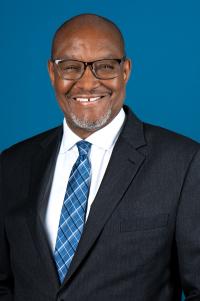
Pipeline Program Expands at Columbia
Sydney Shapiro ’20, always knew she wanted to become a dentist. But after completing her freshman year of college at the University of North Carolina in 2012, she wasn’t so sure. “When you have a difficult freshman year, it’s easy to give up and think you’re never going to have the career you want,” Shapiro explained.
Now in her first year at the College of Dental Medicine, Shapiro says one key motivating factor made all the difference— a program she attended at Columbia the summer after that difficult freshman year. The recently renamed Summer Health Professions Education Program (SHPEP) is one of CUMC’s pipeline programs. Involving all four medical center schools, these programs bring 150 college students to campus every summer. SHPEP is a six-week enrichment and residential program designed to support 80 underrepresented minority and socioeconomically disadvantaged undergraduates interested in the health professions.
“The summer I did the program changed everything,” said Shapiro. “Everyone—the faculty, students, advisors—made it very clear that if dentistry is something you want to do, you can make it happen.”
CUMC will be one of 13 institutions to host the newest iteration of the program. Established by the Robert Wood Johnson Foundation, SHPEP— originally called the Minority Medical Education Program, focused on future MDs, and most recently the Summer Medical and Dental Education Program, adding dentistry to its focus—has evolved to adapt to changes in the health care landscape. That evolution continues with the new name and expanded focus, officially announced by the Association of American Medical Colleges (AAMC) and the American Dental Education Association (ADEA) this fall. Beginning next summer, SHPEP will also include nursing, pharmacy, and other health professions.
“The new expansion of the program will allow us to bring together, at the undergraduate level, medicine, dentistry, nursing, and physical therapy,” said Dennis Mitchell, DDS, Columbia’s vice provost for faculty diversity and inclusion and senior associate dean for diversity and inclusion at the College of Dental Medicine, who has played a key role in the program at Columbia for over a decade. “This integrated approach to learning will provide students with exposure to more holistic, interdisciplinary care, which we really value.”
Throughout its ongoing development, SHPEP has maintained a record of success. To date, more than 21,000 students have completed the program; of those, 66 percent were accepted to medical school, and 97 percent of that group subsequently matriculated. Dr. Mitchell, who serves as the SHPEP’s co-principal investigator for Columbia, says it has been especially critical at the college. In 2002, the school’s percentage of underrepresented minority students was just three percent. Today, CDM has a critical mass of underrepresented minorities—at least 20 percent in every 80-student class—and roughly 30 percent of those students are SHPEP graduates.
The program has been so successful in part because of its comprehensive format. Participants take core science classes required for health professional schools, participate in labs, and learn practical information such as study skills and financial literacy. “It’s more than just a summer session,” said Sandra Garcia, assistant dean for admissions and student affairs at CDM. “Program scholars have the opportunity to meet current students who look like them, have the same backgrounds, and often shared histories. It makes them realize, often for the first time, that they are not alone and that their aspirations are not out of reach.”
For many program scholars, camaraderie and mentorship extends well beyond the six-weeks on campus. “I was able to make strong connections and learn firsthand from faculty and students,” said Angelo Arce ’17, who, after completing the program in 2011, went on to become a teacher’s assistant and a program assistant for SHPEP. “Without SHPEP, I wouldn’t be at Columbia. So it was really important for me to pay it forward and help students like me who are passionate about pursuing health care but have no idea where to start.”
Pipeline projects like SHPEP are particularly valuable amid a growing need for minority health care providers. According to the AAMC, African Americans, Latinos, and Native Americans make up 25 percent of the U.S. population, but account for only six percent of practicing physicians. Diversity in these fields is essential to combating health care disparities. For example, studies show that minority health care providers are more likely to treat minority patients and to practice in underserved communities; studies also indicate that when given the opportunity, minority patients are more likely to choose health care professionals from their own racial and ethnic backgrounds. In addition to improved access to quality care and increased patient satisfaction, diversity also helps ensure the provision of culturally competent care that mirrors the nation’s changing demographics.
Although CUMC has made great progress in the efforts to diversify the student body as well as the faculty, there is still work to be done. “We’re very proud of what we’ve accomplished, but we have a long way to go,” said Dr. Mitchell. “This requires a constant commitment because that’s the only way diversity succeeds.”
